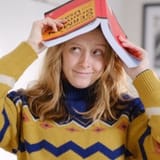A habitable world next door?
More than you needed to know about the smudge of light that might be a planet in the habitable zone of the nearest Sun-like star

Telescopes are made to see. It's even in the name. Telescope is a Renaissance neologism that was concocted from the Greek tele, far, and scopos, watcher, for one of Galileo's inventions.[1] So it's frustrating that exoplanet astronomy has historically involved very little actual seeing. Sight requires contrast, and most exoplanets are far too dim compared to their stars for our telescopes to resolve. Of the 5600 or so exoplanets we know about, less than 100 — all gas giants — have been imaged directly. The rest we know only by the flickering light of their host stars; when a planet transits, or passes between the Earth and a distant star, the star appears to dim.
The astronomer of romantic imagination climbs the observatory steps at midnight to peer through his mechanical far-watcher and take in the night sky. The astronomer of modern reality — if she's interested in exoplanets — waits for a space telescope to beam down data that she can turn into graphs.
That's one reason it's so exciting that astronomers now think they've taken a picture of an exoplanet orbiting the closest Sun-like star to Earth, Alpha Centauri A. The results were announced on August 5 in a pair of preprints on the arXiv server, which were published by the Astrophysical Journal Letters on August 11.
The planet still needs to be confirmed; for now, it is still just an excitingly planet-like smudge of light. But if it really is there, it orbits in the habitable zone of its star, meaning that water could be liquid on its surface — if it had a surface. The planet is a gas giant, so not exactly a welcoming environment for life as we know it. But if it's anything like the gas giants we know from our solar system, it could host pretty big moons. An entire system of habitable little worlds could be spinning around right next door, within reach of ambitious but technically feasible interstellar mission concepts like Breakthrough Starshot.
Behold, perhaps the most exciting smudge you'll ever see:

How exciting is this news? Exciting, but don't get your hopes up that we'll be popping the alien champagne anytime soon. There's still a lot we don't know about this world, tentatively dubbed Alpha Centauri Ab or Rigil Kentaurus b — including whether it is really there at all.
Here's what you need to know about Alpha Centauri Ab, the (maybe) planet next door.




